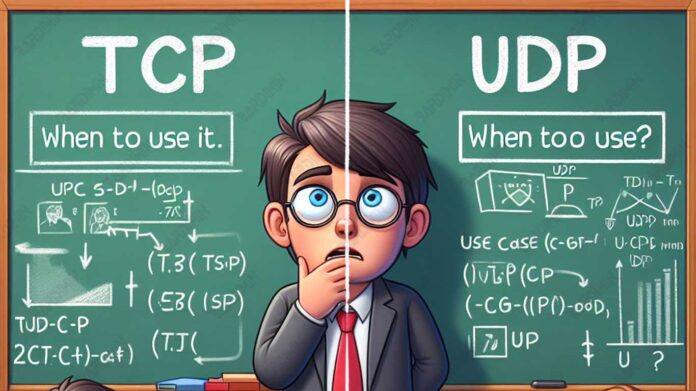In the ever-evolving digital age, network protocols play a vital role in determining the efficiency and reliability of data communication. Transmission Control Protocol (TCP) and User Datagram Protocol (UDP) are the two core protocols that support the exchange of information on the Internet. Both have unique characteristics that affect how data is sent and received in various applications.
Choosing the right protocol isn’t just about speed or reliability; it’s about making sure that the app you’re using can operate at its full potential. Whether it’s for web browsing, video streaming, online gaming, or financial transactions, choosing the right protocol can make a significant difference in performance and user experience.

By understanding the fundamental differences between TCP and UDP, we can make informed decisions for our applications, optimize network performance, and improve user satisfaction. This article will discuss these two protocols, provide insight into when and why to use each, and help you choose the best one for your specific needs.
What is TCP?
Transmission Control Protocol (TCP) is one of the core protocols of the Internet Protocol Suite. TCP is used to reliably transmit data across computer networks. This protocol ensures that data sent from one device to another on the internet arrives intact and in the correct order.
TCP works by dividing the data to be sent into smaller packets. Each packet is assigned a sequence number, which allows the recipient to rearrange the data in the correct order. The process begins with a three-way handshake, which is a series of message exchanges that establish a connection between sender and receiver before data is sent.
Pros of Using TCP:
- Reliability: TCP provides reliable data transmission with a delivery acknowledgment and repeatability mechanism.
- Flow Control: TCP avoids overloading the receiver by adjusting the sending speed based on the recipient’s capacity.
- Congestion Control: TCP reduces traffic when the network is too busy, preventing packet loss.
TCP is ideal for applications requiring high data transmission reliability, such as web services, file transfers, and email.
What is the UDP?
User Datagram Protocol (UDP) is a communication protocol used on the Internet that allows applications to send messages, or datagrams, to recipients in a fast manner but without requiring prior connection or acknowledgment from the receiver that a datagram has been received.
Unlike TCP, UDP does not guarantee the delivery, sequence, or integrity of data. It transmits datagrams independently, without establishing connections, and without mechanisms to check for errors or reset lost packets. This makes UDP faster due to lower communication overhead.
Advantages of Using UDP:
- Speed: UDP allows fast data transmission due to the lack of process ‘handshake’ and control mechanisms.
- Efficiency: Lower overhead means less bandwidth usage.
- Real-time: UDP is suitable for real-time applications that can tolerate the loss of some data plans, such as video streaming or gaming.
UDP is a good choice for applications that require fast and efficient data transmission, where losing some packets will not interfere, such as video streaming, VoIP, or online gaming.
Comparison of TCP and UDP
In choosing between TCP and UDP, it is important to understand their key differences. Here is a table of use case comparisons and analyses that can help determine the protocol that best suits your network needs.

